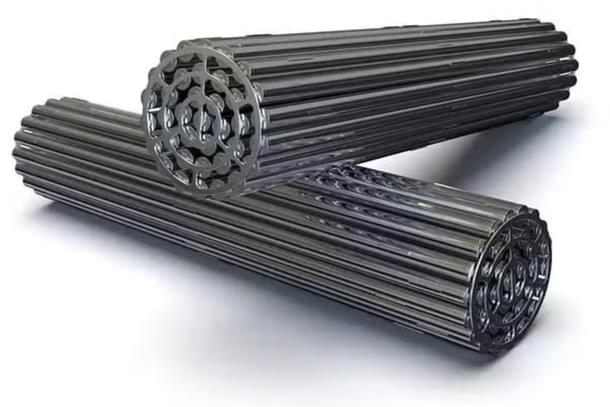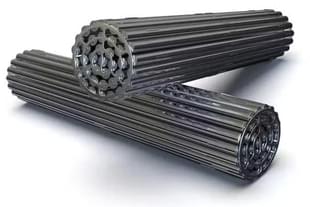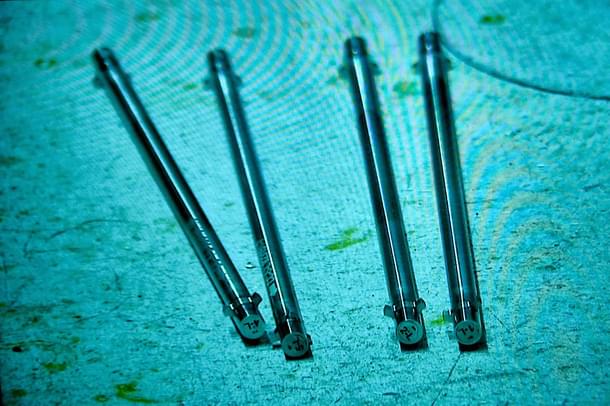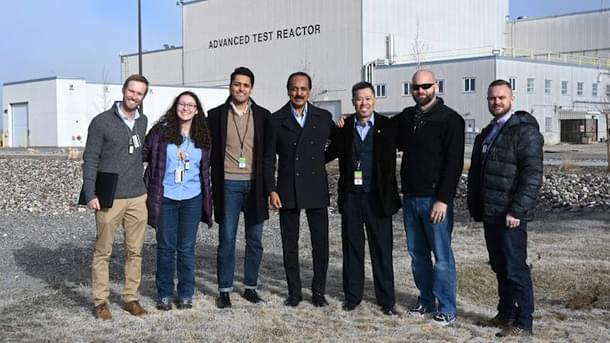Infrastructure
Explained: What NTPC’s Thorium Fuel Partnership With US Firm Can Mean For India’s Nuclear Future
Amit Mishra
Jan 05, 2025, 01:49 PM | Updated Jan 10, 2025, 04:44 PM IST
Save & read from anywhere!
Bookmark stories for easy access on any device or the Swarajya app.


India's nuclear energy sector is on the cusp of a major reboot, driven by innovation from an American company founded by an Indian-origin entrepreneur.
NTPC Limited, India’s largest integrated power company, has joined forces with Chicago-based Clean Core Thorium Energy (CCTE) to explore the development and deployment of ANEEL, a thorium-based fuel for Pressurised Heavy Water Reactors (PHWRs).
This collaboration, subject to approvals from the respective governments, has the potential to redefine India’s energy landscape.
The Buzz
Named in honour of Dr Anil Kakodkar, a leading nuclear scientist and former chairman of the Atomic Energy Commission (AEC), ANEEL stands for Advanced Nuclear Energy for Enriched Life.
This innovative fuel combines thorium with uranium of a certain level of enrichment, called "HALEU" (High Assay Low Enriched Uranium) — a proprietary blend that minimises uranium use while delivering cleaner, safer, and more efficient energy.
Designed for Pressurised Heavy Water Reactors, Canada Deuterium Uranium (CANDU) Reactors, and Advanced Nuclear Reactors, this fuel retains the same external dimensions as conventional natural uranium (NU) fuel, requiring no modifications to existing reactor systems.

Additionally, it employs a high burnup, once-through fuel cycle, offering numerous advantages over the low-burnup NU fuel currently in use.
Strategically, ANEEL provides proliferation resistance, as its spent fuel is less likely to be weaponised. It also reduces waste production by over 85 per cent while enhancing safety through accident-tolerant fuel characteristics.
Tapping Into Thorium
Beyond its technical advantages, the new nuclear fuel developed by CCTE holds the potential to unlock India’s vast thorium reserves for energy production.
India's existing nuclear reactors rely on uranium enriched up to 5 per cent, uranium-235 (U-235). In contrast, HALEU, enriched between 5 per cent and 20 per cent, is significantly more potent but remains scarce in the commercial market.
Currently, only Russia and China have the infrastructure to produce HALEU at scale, with the United States (US) entering the race in October 2023 via Centrus Energy’s demonstration-scale production.
Clean Core’s near-term commercialisation could provide a much-needed alternative, instilling confidence in HALEU suppliers and reshaping the nuclear fuel market.
For India, this advancement is profoundly significant, given that the country possesses nearly 25 per cent of the world’s thorium reserves — estimated at 1.07 million tonnes. However, thorium (Th-232) is not naturally fissile and requires conversion into uranium-233, a process dependent on limited and challenging-to-source materials like U-235 or plutonium-239.
ANEEL offers a faster, more practical solution for harnessing thorium as a primary energy source. Instead of relying on the conventional, drawn-out process, the fuel can accelerate thorium use, perfectly aligning with India’s three-stage nuclear programme.
Precise Fit
The true power of ANEEL lies in its seamless compatibility with India’s Pressurised Heavy Water Reactors — a domain where India has already demonstrated significant expertise.
By harnessing the superior properties of thorium while maintaining the design of natural uranium fuel bundles, ANEEL fuel dramatically enhances the performance of existing heavy water reactor systems.
ANEEL achieves a remarkable burn-up of 60 gigawatt-days per metric ton, compared to just 7,000 MW-days per tonne with conventional NU fuel.
To illustrate the impact, a typical 220 MW PHWR in India would need 175,000 NU fuel bundles over 60 years, but with ANEEL, this requirement drops to just 22,000 bundles — dramatically reducing waste and operational costs.
Where ANEEL Stands
Under a Strategic Partnership agreement with the US Department of Energy, ANEEL fuel is undergoing accelerated irradiation testing and qualification in the Advanced Test Reactor (ATR) at the Idaho National Laboratory (INL).

In November 2024, Clean Core announced that its patented fuel had achieved accelerated burnup conditions, reaching 3.5 to 4 times higher burnup than traditional natural uranium.
Burnup, a critical metric for nuclear efficiency, measures how much uranium is consumed in a reactor. With burnup targets of up to 60 GWd/T, this innovation is set to revolutionise reactor performance.
The successful irradiation of the first batch of ANEEL fuel rodlets marks a critical step in commercialising this fuel. These rodlets will now undergo post-irradiation analysis at INL's Materials and Fuels Complex (MFC), bringing the fuel closer to deployment in PHWR and CANDU reactors worldwide.
In a parallel achievement, Clean Core completed the Phase 1 pre-licensing vendor design review with the Canadian Nuclear Safety Commission, clearing a key regulatory hurdle.
With the successful completion of the pre-licensing process, Mehul Shah, founder of CCTE, expects ANEEL fuel to be commercialised by 2026, positioning it as a pivotal force in the transition to sustainable energy.

What’s Next
Back home, NTPC has become the second major partner of Clean Core, joining the effort to explore ANEEL’s deployment in India’s nuclear power sector.
This collaboration follows a landmark agreement earlier in October 2024, when Larsen & Toubro (L&T) signed a Memorandum of Understanding with CCTE to establish a world-class supply chain for ANEEL fuel, leveraging L&T’s advanced manufacturing capabilities.
Subject to government approval, NTPC and CCTE are set to explore the development and deployment of ANEEL fuel in India.
This partnership goes beyond fuel deployment. It also includes efforts to indigenise ANEEL fuel manufacturing, develop a robust local supply chain, and establish a strong supply chain for HALEU. Additionally, the collaboration aims to facilitate the supply of uranium to India with a sovereign guarantee, ensuring energy security and autonomy.
Signal To New Delhi
New Delhi has so far been reluctant to welcome significant foreign participation in its nuclear power program. However, the scale of India’s need for newly installed power capacity is so high that it can no longer afford to choose solely between domestic and foreign players.
This collaboration between a state-run power giant and a US-based company, though on a smaller scale, represents a notable shift in India’s nuclear energy policy.
This collaboration follows closely on the heels of India’s nuclear operator NPCIL inviting proposals to develop 220 MW Bharat Small Reactors (BSRs) for captive use — an important step in reimagining India’s nuclear landscape.
Evidence from India and beyond supports the expectation that New Delhi’s growth ambitions will necessitate a significant increase in electricity generation capacity. This demand will be further amplified by its manufacturing, transportation, AI, space cooling, and climate adaptation goals.
A head start with ANEEL positions India’s nuclear sector for a stronger, more secure future, playing its cards right at a crucial juncture.





